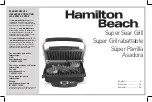
CHE 2-28 R SDS-plus
15
Dust released from materials, such as
lead paints, some types of wood, minerals
and metal, may be hazardous to the
operator or people in the vicinity. Inhaling
or touching these dusts may result in
respiratory diseases and/or allergic
reactions.
– Ensure the work place is well
ventilated!
– If possible, use external dust
extraction.
– It is recommended to wear a respirator
mask belonging to filter class P2.
Do not work on materials which release
hazardous substances (e.g. asbestos).
Identify the power tool with stickers only.
Do not drill any holes into the housing.
The mains voltage and the voltage
specifications on the rating plate must
correspond.
Noise and vibration
The noise and vibration values have been
determined in accordance with EN 60745.
The A evaluated noise level of the power
tool is typically:
– Sound pressure level:
91 dB(A);
– Sound power level:
102 dB(A);
– Uncertainty:
K = 3 dB.
Total vibration value:
– when hammer drilling:
– Emission value:
a
h
= 14.30 m/s
2
– Uncertainty:
K = 1.5 m/s
2
– when chiselling:
– Emission value:
a
h
= 14.50 m/s
2
– Uncertainty:
K = 1.5 m/s
2
ATTENTION!
The indicated measurements refer to new
power tools. Daily use causes the noise and
vibration values to change.
NOTE!
The vibration emission level given in this
information sheet has been measured in
accordance with a standardised test given
in EN 60745 and may be used to compare
one tool with another. It may be used for
a preliminary assessment of exposure.
The declared vibration emission level
represents the main applications of the tool.
However if the tool is used for different
applications, with different accessories or
poorly maintained, the vibration emission may
differ. This may significantly increase the
exposure level over the total working period.
However if the tool is used for different
applications, with different accessories or
poorly maintained, the vibration emission may
differ. This may significantly decrease the
exposure level over the total working period.
Identify additional safety measures to protect
the operator from the effects of vibration such
as: maintain the tool and the accessories,
keep the hands warm, organisation of work
patterns.
CAUTION!
Wear ear protection at a sound pressure
above 85 dB(A).






































